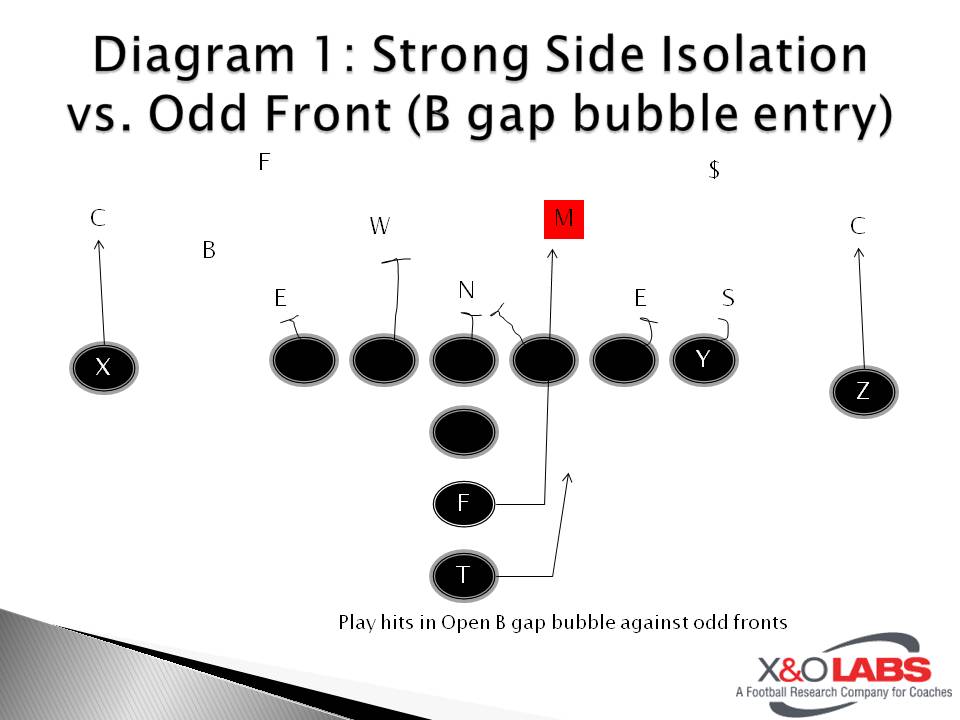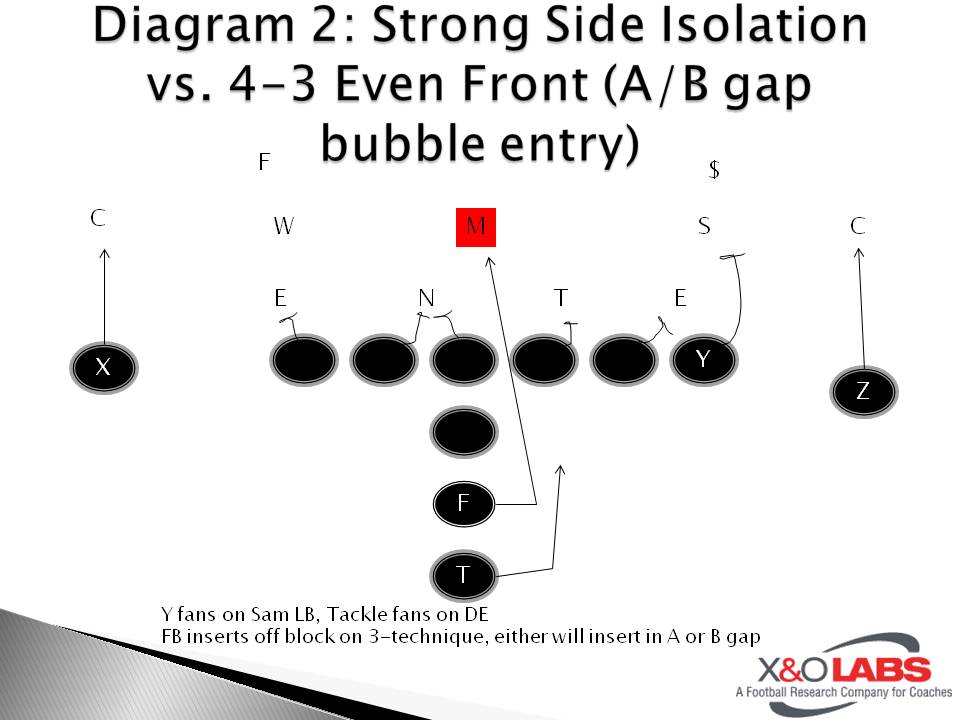By Mike Kuchar Senior Research Manager X&O Labs
Researchers' Note: You can access the raw data - in the form of graphs - from our research on the Iso play: Click here to read the Statistical Analysis Report.
First off, we’d like to congratulate all coaches for putting in countless time and sometimes thankless energy into another successful season. Regardless of our win/loss record (we all know there are too many variables that can account for that), we’ve spend another three months motivating and influencing the lives of our players. We all know how straining the duration of a football season can be, both physically and emotionally. So, now that the off-season is officially here, it’s time to get back to researching what worked this season and evaluating why things didn’t work. Sure, taking a hiatus from football may sound appealing, but if you’re anything like us you’re motivated to get better each off-season and there’s no better way to spend downtime than to continue to learn.
Which is why for our first research report of this off-season, we wanted to focus on an ageless offensive scheme - the isolation play. Chances are you run it, and if you didn’t run it, there was a reason why you got away from it. We’re hoping that after your comb through our research you’ll find a way to implement it back into your package. After conducting our research before the season started, we found that for the majority of coaches, 37.7 percent, the isolation run scheme consists of 10-25 percent of their run game. We also found that many coaches were "banging their head against the wall" trying to run the old fashioned isolation play into an eight or nine man front. But, we’ve also found evidence of a good deal of coaches that still utilize the concept of the isolation play as a staple of their offense. The truth is 80.6 percent of coaches feel that the isolation scheme is a productive play for any situation and any circumstance on the field. We’re going to detail how these coaches are successful in running the play in any situations. Factors such as B gap bubbles in the defense, numbers advantages on the line of scrimmage, and techniques of the insert blockers all factor into the equation of how you can run the play with a good deal of success.
Case 1: The Strong Side Isolation (Using Tight End or Closed Formations) By definition, an "isolation" play is just as it says, typically a man blocking scheme where an offense will insert their second level player onto a defensive second level player at the point of attack. Where you bring that second level player could come from anywhere, and we’ll show you examples. But in most cases, that second level player will come from the backfield. Even with the advent and perpetual evolvement of the spread run game, 56.6 percent of coaches still run the isolation play out of 21 personnel (two backs, one tight end) and 62.2 percent of those coaches use the fullback as the lead blocker. Later in the report, we will detail the fundamentals needed for the insert blocker, for now we’ll focus on running the scheme to the tight end side. It seems the tight end, or three man surface; creates the numbers advantage needed to run the scheme, because aside from the three blockers you have at the line of scrimmage, the insert blocker (or fullback) equals four players at the point of attack.
Get Our Next Report Free! Enter your email in the "Stay Informed" email sign up box in the right hand margin of this page >>>>>>>> right above our Facebook box.
Where you insert that fullback is clearly open to interpretation, but many of the coaches we surveyed like to insert him in the first open gap to the play side of the scheme, which typically is an A or B gap bubble. Of course, this may change depending on the front. Against odd fronts (those most susceptible to inside isolation schemes) the open gap is the play side B gap which is where the fullback will insert (diagram 1). But against, four down front (4-3/4-4 teams) the question is not only where you insert the fullback but how you block the front.

We were curious to find out how most coaches handle a closed B gap on the line of scrimmage and still run the isolation play, so we surveyed coaches on how they would block the isolation against a four down front. Of the various fronts we presented in our surveys such as an Over 4-3, an Under 4-3, 50 Stack, 3-4 Front or 3-3 Front, 43.7 percent of coaches prefer to run the scheme to an over 4-3 front. Despite their preference, there usually is an issue not only handling a dominating three-technique defender (which most four down fronts have) but also cutting off a 7-technqiue defensive end that is sitting in the C gap. We figured you have two options here, either base block the three-technique with the guard, and fan out the tackle and the tight end on the defensive end and the play side linebacker or base block the defensive end with the tight end and double team the three-technique with the play side guard and tackle. Apparently, 54.2 percent said that they will base block the three-technique with the guard and fan out the tackle and tight end (Diagram 2) sending the insert blocker or fullback on the Mike linebacker.












